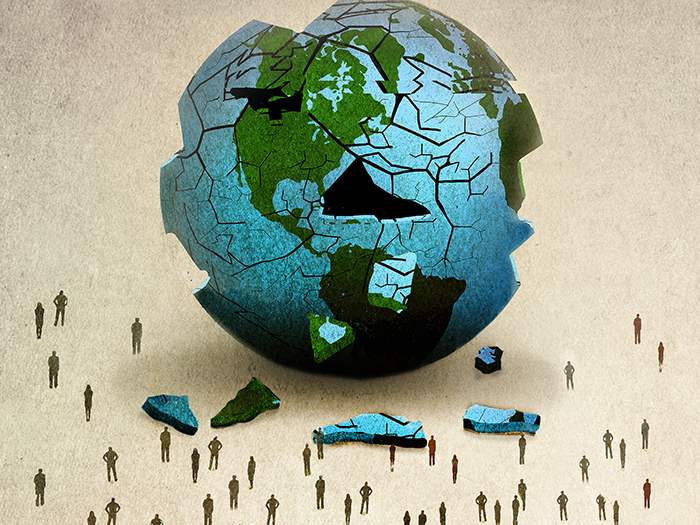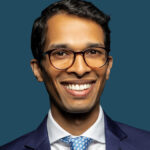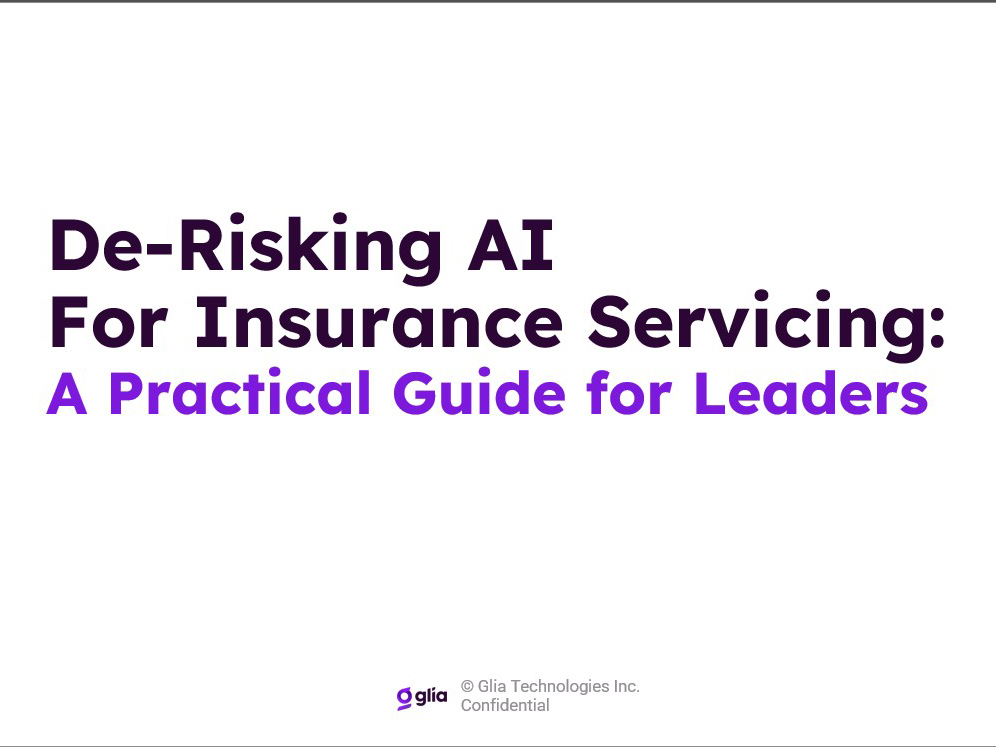The Fragmentation Factor: How Social Division in 2025 Is Amplifying Global Risks

In a year marked by divisive elections, trade wars, and technological disruption, the world’s risk landscape is undergoing a fundamental shift. For the first time in five years, climate change, while still the top concern, is losing its commanding lead as other anxieties close in. According to the recently released AXA’s Future Risks Report, the gaps between the top three risks have narrowed dramatically, with geopolitical instability and cybersecurity threats now breathing down climate’s neck.
But the report’s most striking revelation is not about any single risk. It’s about the thread connecting them all: fragmentation.
The comprehensive study, which surveyed 26,595 respondents, including insurance experts and members of the general population across 57 countries, paints a picture of societies coming apart at the seams. Ninety-five percent of experts and 93 percent of the general population believe crises have increased in recent years. More troubling still, only 19 percent of experts and 16 percent of the public express full confidence in authorities’ capacity to manage future crises.
“This 2025 edition highlights a world of rising polarizations confronting the globalization of risks,” writes Thomas Buberl, CEO of AXA, in the report’s foreword. “Social fragmentation is more than ever a threat to our society’s wellbeing.”
A Divided World Faces Multiplying Threats
The numbers on social division are stark. Fifty-nine percent of the general population believe people in their country share fewer common values, or none at all. Just 12 percent think most of their peers share their vision of an ideal society. Only 10 percent describe their country as “fairly united and sharing common values.”
When respondents were asked what factors divide their societies most, economic and social inequalities topped the list globally, followed closely by political and ideological divisions. But the specifics vary by region: Europeans cite immigration tensions most frequently, Americans point to misinformation and polarization on social networks, while respondents in Asia-Pacific and Africa emphasize economic disparities and unequal access to education.
This fragmentation isn’t just a social concern – it’s a risk multiplier. Divided societies struggle to mount coordinated responses to threats, from climate adaptation to pandemic preparedness. Trust erosion undermines the collective action needed to prevent crises. And yet, paradoxically, 67 percent of respondents still believe international decision-making offers the most effective path to solutions, even as 56 percent of experts predict countries will increasingly go it alone.
The Top Ten: Familiar Faces and a Troubling New Entry
Climate change retained its top position for the fifth consecutive year, but its dominance is waning. In Europe, geopolitical instability overtook climate to claim the number one spot among experts for the first time. In Africa, cybersecurity did as well. The findings suggest not a lessening of climate concern (2024 was the hottest year on record) but rather an intensification of other threats.
The climate paradox runs deeper. When asked about their primary motivation for selecting climate change as a top risk, 45 percent of experts cited destruction of infrastructure and property from natural catastrophes, while only 19 percent emphasized insufficient collective action to support the climate transition. Short-term fear is trumping long-term planning, even as only 12 percent of experts who chose this risk believe authorities are well-prepared to handle it – the lowest score since tracking began.
Geopolitical instability, ranking second, reflects an anxious moment in international relations. Eighty-four percent of experts and 79 percent of the general population see a significant risk that geopolitical tensions lead to global war. The concern has shifted: economic consequences such as trade wars, supply chain disruption, and sanctions now motivate 39 percent of experts who selected this risk, overtaking last year’s top response of military conflict resurgence.
Cybersecurity threats, in third place, are increasingly intertwined with geopolitical tensions. The risk topped the rankings in several African countries and Indonesia, with 71 percent of experts and 70 percent of the public saying they feel vulnerable in their daily lives. Cyber warfare targeting critical infrastructure is the primary concern, cited by 39 percent of experts – a figure that jumps to 51 percent among European experts.
Artificial intelligence and big data risks claimed fourth place, with 60 percent of experts and 66 percent of the public feeling vulnerable to these threats. The primary concern is not technological failure but rather “the emergence of advanced AI threatening human interests and violating human rights,” according to 43 percent of experts. Only 11 percent of experts believe authorities are well-prepared, tied for the lowest confidence score of any risk.
Perhaps most significantly, risks related to changing demographics cracked the top ten for the first time, entering at number ten. The implications are profound and will be felt for decades.
The Demographic Time Bomb
The demographic challenge represents a slow-motion crisis with cascading effects. One in four people globally now live in a country where population has already peaked, according to UN projections cited in the report. In Europe, 21 percent of the population is currently over 65—a figure projected to reach 29 percent by 2050. Asia will see its elderly share nearly double from 10 percent to 19 percent in the same timeframe.
The experts are sounding alarms about multiple pressure points. Ninety-three percent expect demographic change to increase healthcare costs for individuals over the next decade. Eighty percent see a significant risk of pension system collapse, while 74 percent foresee the same for healthcare systems. Eighty-one percent worry about overburdened family caregivers, and 80 percent anticipate serious shortages of care staff.
What makes this challenge particularly vexing is the solutions paradox. When asked about potential remedies, 88 percent agreed that expanding accessible nurseries for young parents would be effective. But the most effective solution may be the least palatable: encouraging immigration to attract young families. While 74 percent acknowledge this would work, 68 percent oppose implementing it.
The demographic squeeze also threatens to limit governments’ fiscal capacity to address other future risks, creating a dangerous feedback loop where aging populations consume resources needed for climate adaptation, infrastructure resilience, and technological innovation.
The Trust Deficit and Insurance Opportunity
Across virtually every risk category, confidence in public authorities has eroded. For AI risks, demographics, social tensions, climate change, and cybersecurity, only 11 to 12 percent of experts believe authorities are well-prepared. The general population is somewhat less pessimistic but still concerned, with preparedness confidence ranging from 29 to 33 percent for most major risks.
Yet amid this trust crisis, 89 percent of experts and 72 percent of the general population agree that insurers have an important role to play in protecting against emerging risks. More encouragingly, 86 percent of experts and 84 percent of the public believe the risks that worry them most could be at least partially avoided through strong preventive actions.
This represents both a mandate and an opportunity for the insurance industry. Corporate clients are already voicing clear expectations: 66 percent want risk management and transfer for innovative solutions, 61 percent seek support in prevention and resilience building, and 57 percent desire knowledge sharing and education to risks.
The industry is responding by evolving from payer to partner. AXA, for instance, has committed to delivering over 9,000 adaptation solutions for commercial clients from 2024 to 2026, including climate impact modeling to 2050 across 14 physical climate perils. The company has trained over 2,000 clients and brokers, delivered over 1,500 risk services, and issued more than 5,000 weather alerts with actionable guidance. AXA Climate has trained six million employees worldwide on climate change, carbon impact, and natural resource management.
“At AXA, prevention is at the heart of our mission to anticipate and mitigate future risks,” said Frédéric de Courtois, AXA Group Deputy CEO, in an interview for the report. “Our Payer-to-Partner strategy is designed to strengthen our preventive capabilities.”
The approach extends to vulnerable populations often underserved by traditional insurance. AXA currently covers 17.4 million customers with inclusive insurance products designed for lower-middle-class populations, targeting 20 million by 2026.
Looking Ahead: Resilience in a Fractured World
The 2025 Future Risks Report makes clear that we’re living in an age of polycrisis, where multiple threats interact and amplify each other in unpredictable ways. Fragmentation does not just make societies less cohesive – it makes them less resilient, less capable of the collective actions needed to prevent catastrophes and recover from shocks.
But the report also reveals reasons for cautious optimism. Despite deep divisions, 72 percent of the general population remain committed to democratic ideals. Despite eroding trust, majorities still believe in the power of prevention and the importance of international cooperation. And despite the magnitude of the challenges, industries like insurance are stepping up to play constructive roles.
“We must act together today, with vision and determination, to overcome the risks of tomorrow and build a safer and more sustainable future,” Buberl concludes in his foreword.
As the world marks AXA’s 40th anniversary, the company’s message is that the insurance industry must continue reinventing itself, not just as a financial backstop but as an active force for social cohesion, resilience building, and prevention. In a fragmented world, the role of insurance as a mechanism for mutualization and shared risk has become more vital than ever.
The defining question remains whether societies can in effect overcome their divisions to mount effective responses to climate change, demographic shifts, technological disruptions, and geopolitical instability. This determines not just which risks materialize, but whether we face them together or alone.
To access AXA’s Future Risks Report, click here. &










